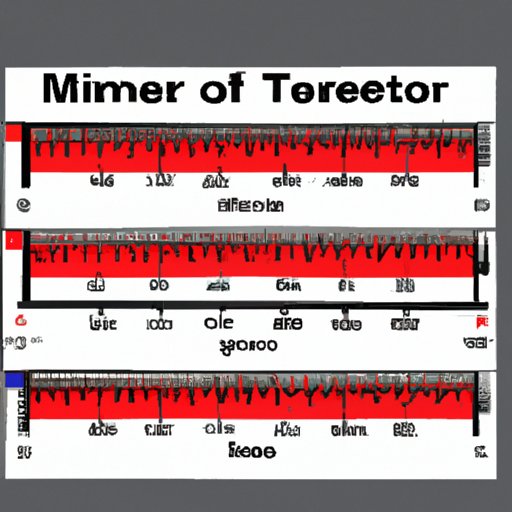Introduction
The metric system has become a standard of measurement throughout much of the world, with most countries adopting it as their official system. One of the most common units of measurement in the metric system is the kilometer (km). However, many people find it challenging to convert kilometers to meters (m). This article will provide detailed explanations and examples to help you understand how to convert km to m correctly.
Mastering Metric Measurement: Understanding the Conversion of Km to M
The metric system is a decimal-based measurement system that uses prefixes to denote the size of the unit. For example, kilo- means 1,000, and milli- means 1/1,000. This means that the kilometer is equal to 1,000 meters, and the millimeter is 1/1,000 of a meter.
The metric system offers advantages over other measurement systems because it is easy to understand and provides a consistent method of measurement. Unlike other systems, the metric system is also universal and not tied to a specific country or region.
To convert kilometers to meters, you must remember that a kilometer is equal to 1,000 meters. So, to convert kilometers to meters, multiply the number of kilometers by 1,000. For example, 2 kilometers is equal to 2,000 meters (2 x 1,000).
Breaking Down Kilometers and Meters: A Guide to Metrics and Unit Conversion
The kilometer is a unit of length that is equal to 1,000 meters. It is one of the most commonly used units of measurement for long distances, such as measuring the distance between two cities or countries.
The meter is the fundamental unit of length in the metric system. It is defined as the length of the path traveled by light in a vacuum during a time interval of 1/299,792,458 of a second. This unit is used for measuring distances that are shorter than a kilometer, such as the length of a room or the height of a person.
When it comes to usage, the kilometer is typically used when measuring long distances, such as in the automotive or aviation industries, while the meter is used for shorter distances that are more commonly encountered in day-to-day life.
From Kilometers to Meters: How to Simplify Metric Conversion
Common mistakes made when converting kilometers to meters include forgetting to multiply by 1,000 and accidentally adding three zeros to the end of the number rather than moving the decimal point three places to the right.
To avoid these mistakes, you can use some helpful tricks. For example, you can count the number of zeros in the number of kilometers and place the decimal point in the answer three places to the right of the original number.
So, if you have 6 kilometers, you can count the number of zeros (1) and move the decimal point three places to the right to get 6,000 meters.
Kilometers vs. Meters: Understanding the Differences and Convert with Ease
The fundamental difference between kilometers and meters is the size of the unit of measurement. A kilometer is 1,000 times larger than a meter.
It is essential to know when to use each unit to avoid confusion and errors in measurement. Kilometers are used primarily for measuring long distances, while meters are used for shorter distances. For example, you would use kilometers to measure the distance from one city to another, but you would use meters to measure the length of a room.
The Ultimate Guide to Converting Km to M: Tips and Tricks for Metric System Mastery
In summary, converting kilometers to meters is a straightforward process once you understand the fundamentals of the metric system. Remember that a kilometer is equal to 1,000 meters, and to convert kilometers to meters, you need only to multiply by 1,000.
Additionally, there are several helpful tricks and shortcuts you can use to avoid mistakes when converting, such as counting the number of zeros in the number of kilometers and placing the decimal point three places to the right of the original number.
To master the metric system, it is essential to practice converting between different units of measurement. By doing so, you will become more comfortable with the conversions and will be able to perform them more quickly and accurately.
Conclusion
By reading this article, you should now have a better understanding of how to convert kilometers to meters. Remember that a kilometer is equal to 1,000 meters, and to convert kilometers to meters, you need only to multiply by 1,000. By practicing your conversions and utilizing the helpful tips and tricks outlined in this article, you can quickly become a master of the metric system.
